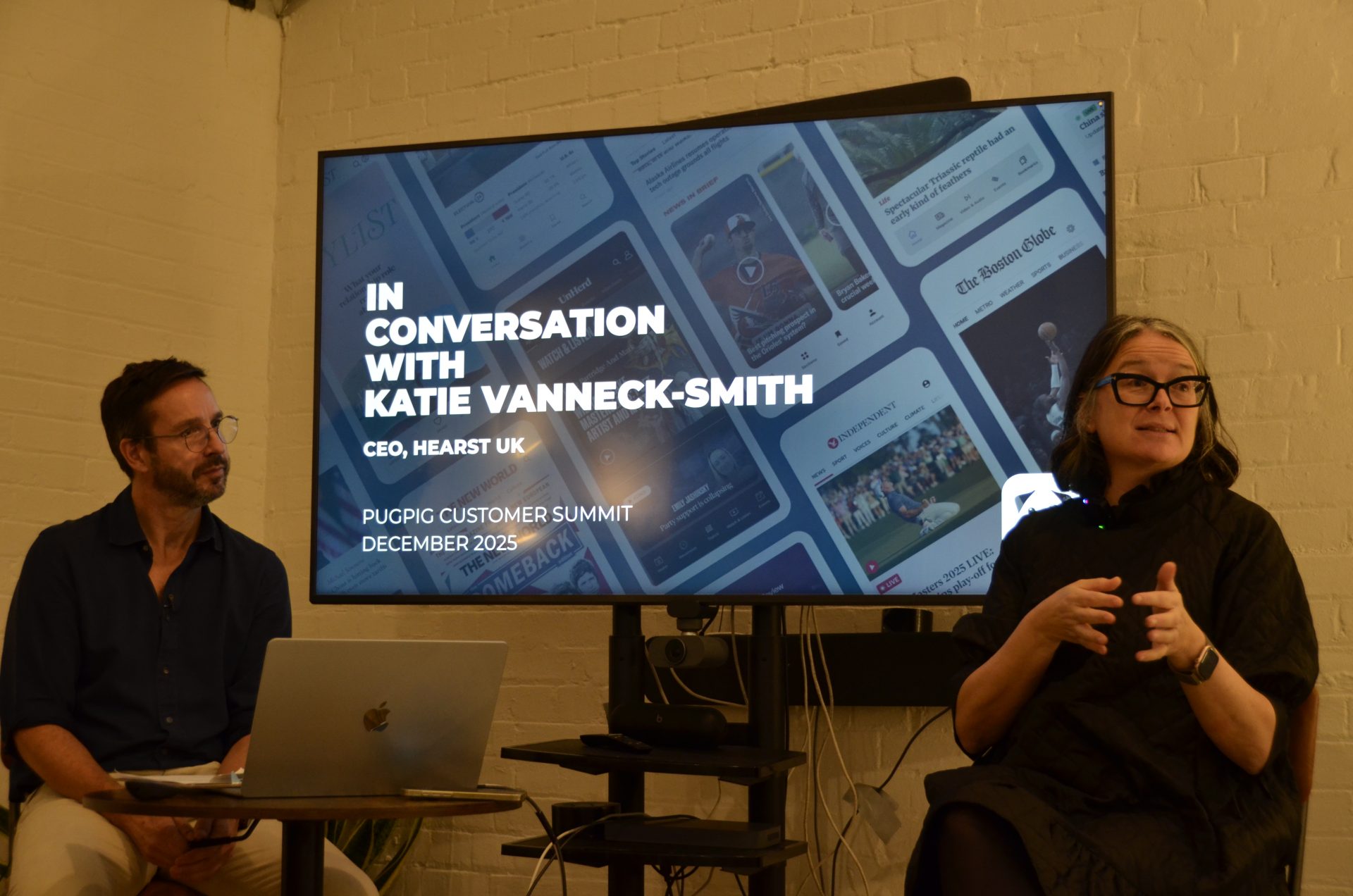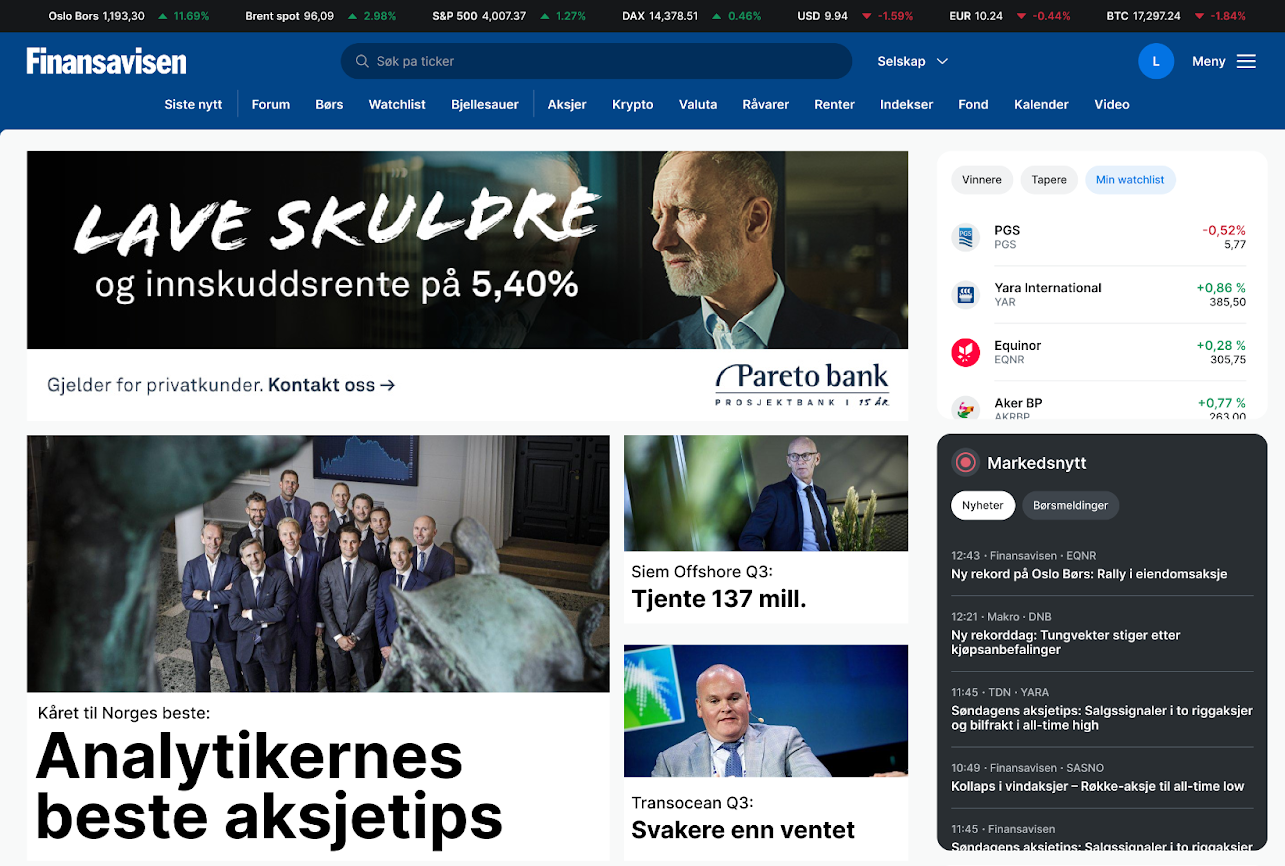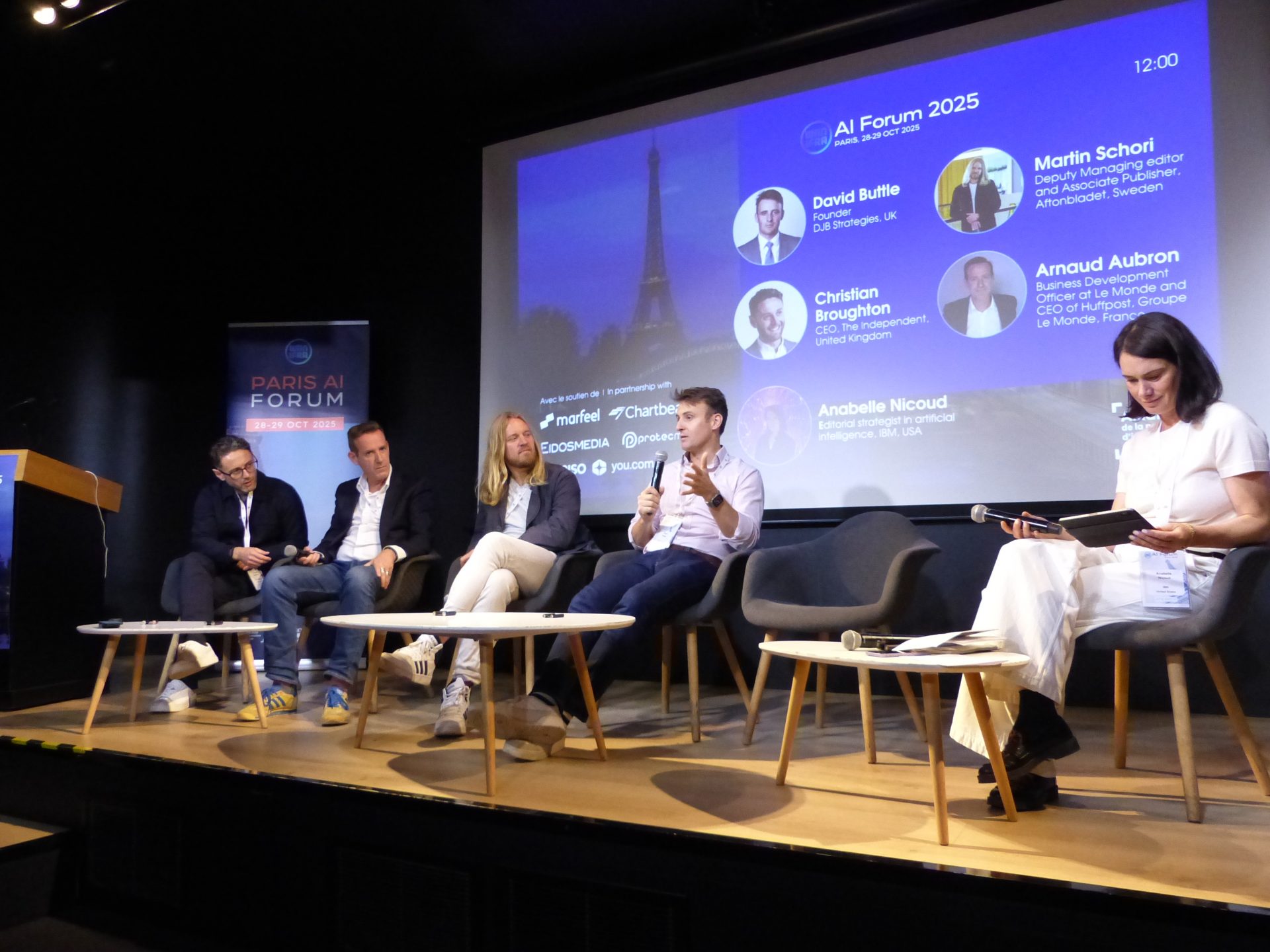
Newsletter
Newsletter
Remember last week when we said that we needed more data to call peak subscription? The Reuters Institute has some data about that.
16th June 2023

In the Pugpig weekly media bulletin, Pugpig’s consulting services director Kevin Anderson and digital growth consultant James Kember distill some of the best strategies and tactics that are driving growth in audiences, revenue and innovation at media businesses around the world.
Reuters has released their annual Digital News Survey report, which uses a YouGov survey of over 93,000 online news consumers in 46 markets to offer key insights into the media landscape and consumer attitudes. The major themes include:
Overall, it is a sobering report, but we believe that it underscores the importance of developing and maintaining a direct relationship with your audiences.
A recent theme in this bulletin has been the end of the Platform Era, and this features prominently in the report by Reuters. In 2023 just 28% of respondents accessed news via Facebook down from 42% in 2016. The temptation is to view this as a shift by the consumer, but as we’ve seen previously Facebook made a commercial decision in summer of last year to move away from news. This has spelled disaster for several publishers who have relied on the cheap, high volume traffic from the platform. All but one of the other social platforms (TikTok, of course) have stayed relatively flat. The volume isn’t being picked up elsewhere.
TikTok is a success story, although perhaps not for news. It’s easily the fastest growing social platform and is becoming increasing important with the youngest age groups. 44% of 18 to 24 year olds are accessing the platform.
However, high use of social media does not translate into higher traffic to news sites. Less than half of young people (20% of total) are using it for news. It has less success amongst older users and usage rates decline rapidly through the age groups, culminating in just 6% of the 55+ group getting their news from the platform.
However, the importance of TikTok goes beyond the reach of its news content. It is influencing the way that users consume content and news is a by-product of that. There is a consumer shift towards more accessible, entertaining and interactive formats and a move away from traditional news brands to individual influencers.
Perhaps the most concerning of the findings for news organisations is the general low levels of trust in news. Whilst the Covid pandemic resulted in gains in trustworthiness as audiences actively sought reliable, informed and accurate content these trends have now reversed. Only 4 in 10 of the respondents said that they trust “most news most of the time”, but there are massive differences by country. Finland is top of the table, with 69% of the population trusting the news, whilst the UK and US are pretty far down the list with only around 1 out of 3 people in the same trusting news. Greece sits on the bottom with just 19%, following a turbulent year.
This is happening against a backdrop of news avoidance levels that are at a near all time high, with 36% of people responding that they avoid news. Some are trying to steer clear of certain topics while others have gone cold turkey with respect to news. There are opportunities to re-engage these audiences, with 55% of news avoiders being interested in positive stories and 46% of them looking to engage with solutions journalism. Even 35% of those who have taken a news diet are still interested in the big stories of the day. Publishers can't control what's going on in the world, but there are opportunities to create more personalised products for these audiences that cater to their interests and just as importantly those topics which they don't want to engage with.
The increasing difficulty of attracting audiences is coming at a time when economic headwinds are causing news readers to reconsider their subscription expenditure. The report found that growth in payment for online news has stalled in many markets. Across 20 key countries, the percentage paying for news remained at 17% for the second year in a row. This raises the question of whether current subscription offerings have reached saturation point. Considering the concern about advertising revenue through a period of global economic uncertainty it is another worry for many publishers who will feel that they need to grow to stand still.
The issue isn’t just related to growth, but also to retention. An average of 23% of respondents cancelled at least one of their news publications over the last year with the same amount negotiated a cheaper price. While the report has cited some doubts due to the breadth of the data there is a concern that as these trends are being driven by macroeconomic conditions that will only get worse over the coming year. What is clear is that publishers need to focus on retention and ensure that their audience are getting value for money.
Across countries, however, the underlying reason for cancelling was that people simply weren’t using the subscription enough to justify the cost or they didn’t have enough time. At a fundamental level, news media that struggle to get people to pay attention to them will have an even harder time convincing people to pay.
Reuters Institute for the Study of Journalism Digital News Report 2023
While there are big differences across countries, audiences in Britain are some of the most reluctant when it comes to paying for news. Only 9% of the population pay for a news service. This has grown from the 7% it was at in 2016, but it’s remained level for the last 4 years despite the pandemic. Meanwhile the story in the US, the audience has grown from a not dissimilar base of 9% in 2016 to 21%, with the average subscriber now paying for two publications - a local and a national. That is a change from the the past few years when the report found that there was a "winner takes most" dynamic that benefited a few national up-market brands.
Across all markets the majority (57%) prefer to read the news rather than watch or listen. This was particularly the case in markets with a strong print news tradition, such as the UK, where 78% read, 15% watch and 7% listen. However, the report has made the point that the format of news needs to adapt to reach the youngest audiences.
Even in countries with a strong preference to read text, content consumption differs heavily from older to younger generations. In the UK, a majority (63%) of 18–24s still prefer text but overall they are a lot less likely to want to read online news. Therefore the report has concluded that as young people are using video-heavy online services such as TikTok publishing business will need to adjust to stay relevant, and this means focusing on video.
Moreover, audio has a role to play, but perhaps not as large might be assumed. In 2023, across 30 countries, 12% of respondents listened to a news podcast in the last month, creeping up from 11% in 2018. Overall, podcasts audiences index towards younger age groups with 56% of 18-24 year olds and 53% of 25 to 34 year olds accessing a podcast in the last month, compared to 41% of 35 to 44 year olds, 30% of 45 to 54 year olds and 19% of 55+. This hints that they are important tool but there is no data to point to the breakdown from under 35 year olds between news and entertainment podcasts. The advice here is similar to video, audio is a key tool of consumption for the youngest age groups and news brands need to find a way to incorporate it within their offering.
There’s an increasing divergence between younger and older audiences. News media is still heavily tilted towards the older age groups. The opportunity for growth should come through adapting news to fit a younger audience who are increasingly relying on social platforms such as TikTok and non-traditional voices, such as influencers. This all comes against an economic and social backdrop that gives pause for thought. Those that are engaged and trust in news are considering their financial commitments and looking to cancel or amend payments. What is obvious is that a focus on trust and quality is going to be increasingly important in the coming years.
What should publishers do?
Pugpig Consulting can help you navigate these changes with support for revamping your audience development strategies using our proven data-driven process, get in touch.
Here are some of the most important headlines about the business of news and publishing as well as strategies and tactics in product management, analytics and audience engagement.

Newsletter

Newsletter

Newsletter

Newsletter

Newsletter